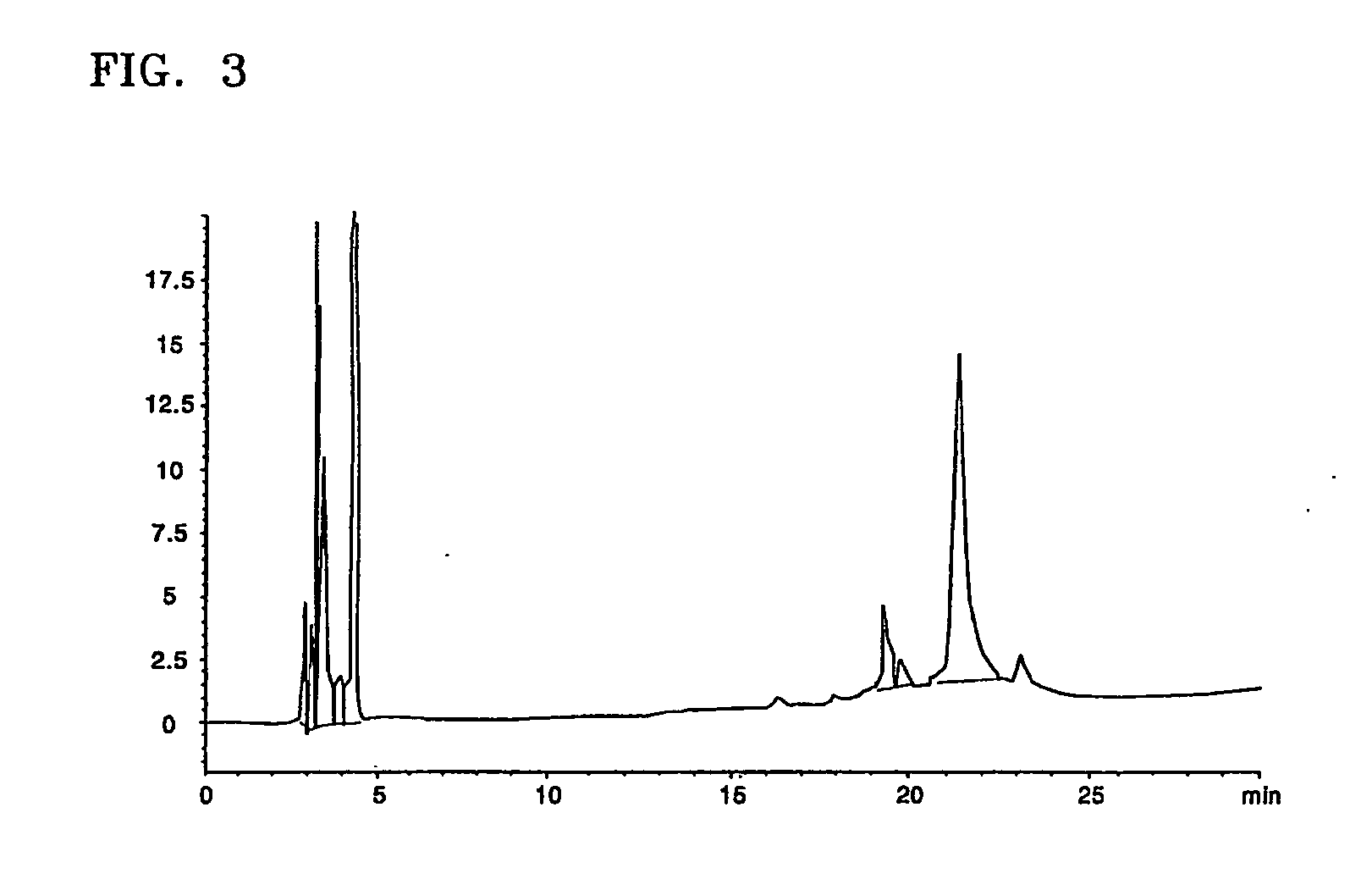Process for purifying interferon beta
- Summary
- Abstract
- Description
- Claims
- Application Information
AI Technical Summary
Benefits of technology
Problems solved by technology
Method used
Image
Examples
example 1
[0038] 350 ml of Blue-Sepharose 6 (Amersham biosciences, Sweden) was packed in a XK-50 column (Amersham biosciences, Sweden) to make an affinity chromatography column. A 20 mM sodium phosphate buffer solution containing 1 mM EDTA was allowed to sufficiently flow through the column to equilibrate the column. Then, 25 L of a Chinese hamster ovary (CHO) cell serum-free culture containing interferon beta was allowed to flow through the column at a flow rate of 5-10 ml / min and then the column was washed with about 3 column volumes (CV) of an equilibration buffer solution.
[0039] About 3 CV of a 20 mM sodium phosphate buffer solution (pH 7.2) containing 50% propylene glycol was allowed to flow through the column at a flow rate of 5 ml / min to remove impurity proteins, followed by washing with about 3 CV of an equilibration buffer solution. Then, about 3 CV of 20 mM sodium phosphate buffer solution (pH 7.2) containing 2M NaCl was allowed to flow through the column at...
example 2
Reversed-phase High-performance Liquid Chromatography (RP-HPLC)
[0042] The interferon beta-containing solution obtained according to the present invention in Example 1 underwent diafiltration using an ultrafiltration system (molecular weight cut-off of 10,000) and then loaded on a RP-HPLC column (Protein C4, 10 μm in bead size, 30 Å in pore size, Vydac) at a flow rate of 2 ml / min. The column was then washed with about 3 CV of 0.1% HCl buffer solution (pH 2.1). Elution of interferon beta was performed using a 0.1% HCl solution (A) and a solution (B) of 0.1% HCl in 90% ethanol by a linear concentration gradient from 45% solution (B) to 80% solution (B) (about 20 CV) to thereby separate impurity proteins from target proteins.
example 3
[0043] An interferon beta-containing solution obtained in Example 2 was concentrated to 200 μg / Ml and ethanol contained in the concentrate was replaced 500 times or more by a 20 mM sodium acetate buffer solution (pH 4.0). The resultant solution was loaded on a Sephacryl S-200 column (1700 ml, XK-50 / 100, Amersham biosciences, Sweden) equilibrated with a 20 mM sodium acetate buffer solution (pH 4.0) to obtain an interferon beta-containing solution.
PUM
| Property | Measurement | Unit |
|---|---|---|
| Molar density | aaaaa | aaaaa |
| Concentration | aaaaa | aaaaa |
| Molecular weight | aaaaa | aaaaa |
Abstract
Description
Claims
Application Information
 Login to View More
Login to View More - R&D
- Intellectual Property
- Life Sciences
- Materials
- Tech Scout
- Unparalleled Data Quality
- Higher Quality Content
- 60% Fewer Hallucinations
Browse by: Latest US Patents, China's latest patents, Technical Efficacy Thesaurus, Application Domain, Technology Topic, Popular Technical Reports.
© 2025 PatSnap. All rights reserved.Legal|Privacy policy|Modern Slavery Act Transparency Statement|Sitemap|About US| Contact US: help@patsnap.com



